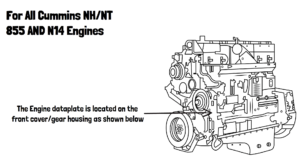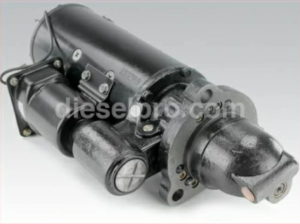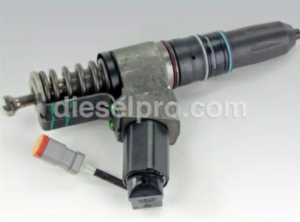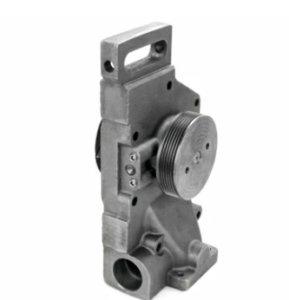
Introduction
Working on a Cummins N14 engine requires strict adherence to safety precautions to prevent injury, equipment damage, and costly repairs. The N14 is a heavy-duty diesel engine, meaning its components are large, pressurized, and often high-voltage. Following proper safety measures ensures safe maintenance, troubleshooting, and repairs.
This guide expands on critical safety protocols when working on the electrical, fuel, cooling, and mechanical systemsof the Cummins N14. Whether performing routine maintenance or a full engine rebuild, these step-by-step safety practices will help protect both technicians and equipment.
Parts Catalog for N14 Cummins Industrial Engines
A. Electrical System Safety

1. Disconnect the Battery Before Performing Electrical Work
The Cummins N14 electrical system consists of high-current components such as the starter motor, alternator, and ECM (Electronic Control Module).

- Prevents accidental shorts, which can cause electrical fires or damage circuits.
- Protects the technician from electrical shocks.
- Prevents unintended engine cranking while working near moving parts.
Step-by-Step Battery Disconnection Procedure
- Turn off the engine and remove the key.
- Locate the battery terminals (typically found in a battery box).
- Disconnect the negative (-) battery cable first to prevent accidental grounding.
- Disconnect the positive (+) battery cable.
- Secure the battery cables away from metal surfaces to prevent contact.

Starter & Related Components for Cummins N14 Industrial Engine
B. Handling Heavy Components Safely


1. Use Proper Lifting Tools for Heavy Components
The Cummins N14 engine block, cylinder head, crankshaft, and flywheel are extremely heavy and require special handling equipment.

- Severe back or muscle injuries from lifting heavy parts manually.
- Dropped engine components can cause serious damage to parts and injury to technicians.
Recommended Lifting Equipment:
- Engine Hoist / Crane: Used for removing and installing the cylinder head, crankshaft, and block.
- Hydraulic Jack & Jack Stands: Provides stable lifting for working underneath the engine.
- Load Leveler: Ensures balanced lifting of the entire engine assembly.
Step-by-Step Engine Component Lifting Guide:
- Ensure the lifting straps, chains, and hoist are rated for at least 1000 lbs (450 kg).
- Attach the lifting hooks securely to engine lifting points.
- Slowly lift and balance the component, checking for loose connections.
- Move components carefully to avoid swinging or shifting loads.

C. Fuel System Safety

The fuel system in the Cummins N14 operates under high pressure, especially in CELECT™ and CELECT™ Plus electronic injection systems. Diesel fuel is also flammable, requiring strict handling procedures.
1. Wear Eye Protection When Working Around Pressurized Fuel Lines

- Fuel injection pressures can exceed 3,000 psi, causing serious eye or skin injuries.
- Diesel fuel exposure can lead to chemical burns and irritation.
- Fuel leaks pose fire and explosion hazards.
Step-by-Step Safe Fuel System Handling:
- Depressurize the fuel system before disconnecting fuel lines.
- Wear safety goggles and fuel-resistant gloves to protect skin and eyes.
- Use a shop towel to catch excess fuel when disconnecting injectors or lines.
- Store diesel fuel away from open flames or sparks.
- Dispose of fuel-soaked rags in an approved container to prevent spontaneous combustion.
Injector & Related Components for Cummins N14 Industrial Engine
D. Cooling System Safety

1. Allow the Engine to Cool Before Opening the Radiator Cap
The N14 cooling system operates under pressure and reaches temperatures of over 200°F (93°C).

- Hot coolant can cause severe burns if the system is opened too soon.
- Pressurized steam and coolant can spray unexpectedly.
Step-by-Step Safe Cooling System Handling:
- Turn off the engine and let it cool for at least 30 minutes.
- Place a thick rag over the radiator cap to protect from sudden pressure release.
- Slowly turn the cap counterclockwise to the first stop to release residual pressure.
- Once pressure is relieved, fully remove the cap and inspect coolant levels.

Cooling System & Related Components for Cummins N14 Industrial Engine
E. Torque Specifications & Fastener Safety
1. Never Exceed Torque Specifications
All fasteners on the Cummins N14 engine require precise torque settings to ensure safe and effective performance.

- Over-tightening can strip threads, damage bolts, or cause component failure.
- Under-tightening can cause leaks, engine vibrations, and fastener loosening.
Step-by-Step Torque Safety Guide:
- Use a calibrated torque wrench for all critical fasteners.
- Check OEM torque specifications before tightening components.
- Use the correct tightening sequence to avoid warping components (e.g., cylinder heads and main caps).
- Apply thread lubricant or Loctite if specified in the service manual.

F. Fire and Chemical Safety
1. Avoid Open Flames When Working with Flammable Liquids
Diesel fuel, lubricants, and cleaning solvents are all flammable.

- Diesel fuel vapors can ignite if exposed to open flames or sparks.
- Certain degreasers and brake cleaners emit toxic fumes when heated.
Safe Handling of Flammable Liquids:
- Work in a well-ventilated area to prevent fume buildup.
- Do not smoke or create sparks near flammable liquids.
- Store fuel and solvents in approved containers away from heat sources.
- Use non-sparking tools when working near fuel tanks or lines.
G. Worksite Safety Best Practices

1. Maintain a Clean and Organized Work Area
A cluttered workspace increases the risk of tripping, slipping, or losing critical parts.
Safe Worksite Setup:
- Keep tools and components organized.
- Clean up spilled fluids immediately to prevent slipping hazards.
- Use non-slip mats around the engine bay.
2. Wear Proper Personal Protective Equipment (PPE)


- Safety glasses → Protects against fuel sprays, metal shavings, and debris.
- Gloves → Prevents burns, cuts, and chemical exposure.
- Steel-toe boots → Protects feet from falling heavy parts.
Conclusion
Servicing a Cummins N14 engine requires strict safety measures to prevent injury and maintain mechanical integrity. Whether handling electrical systems, fuel lines, heavy components, or pressurized cooling systems, following these step-by-step safety procedures ensures a safe and efficient repair process.
By implementing proper lifting techniques, electrical disconnection procedures, torque specifications, and fire safety protocols, technicians can work efficiently and confidently, minimizing the risk of accidents and costly mistakes.
Parts Catalog for N14 Cummins Industrial Engines



 Free US Calls: 1-888-433-4735
Free US Calls: 1-888-433-4735 International: 305-545-5588
International: 305-545-5588